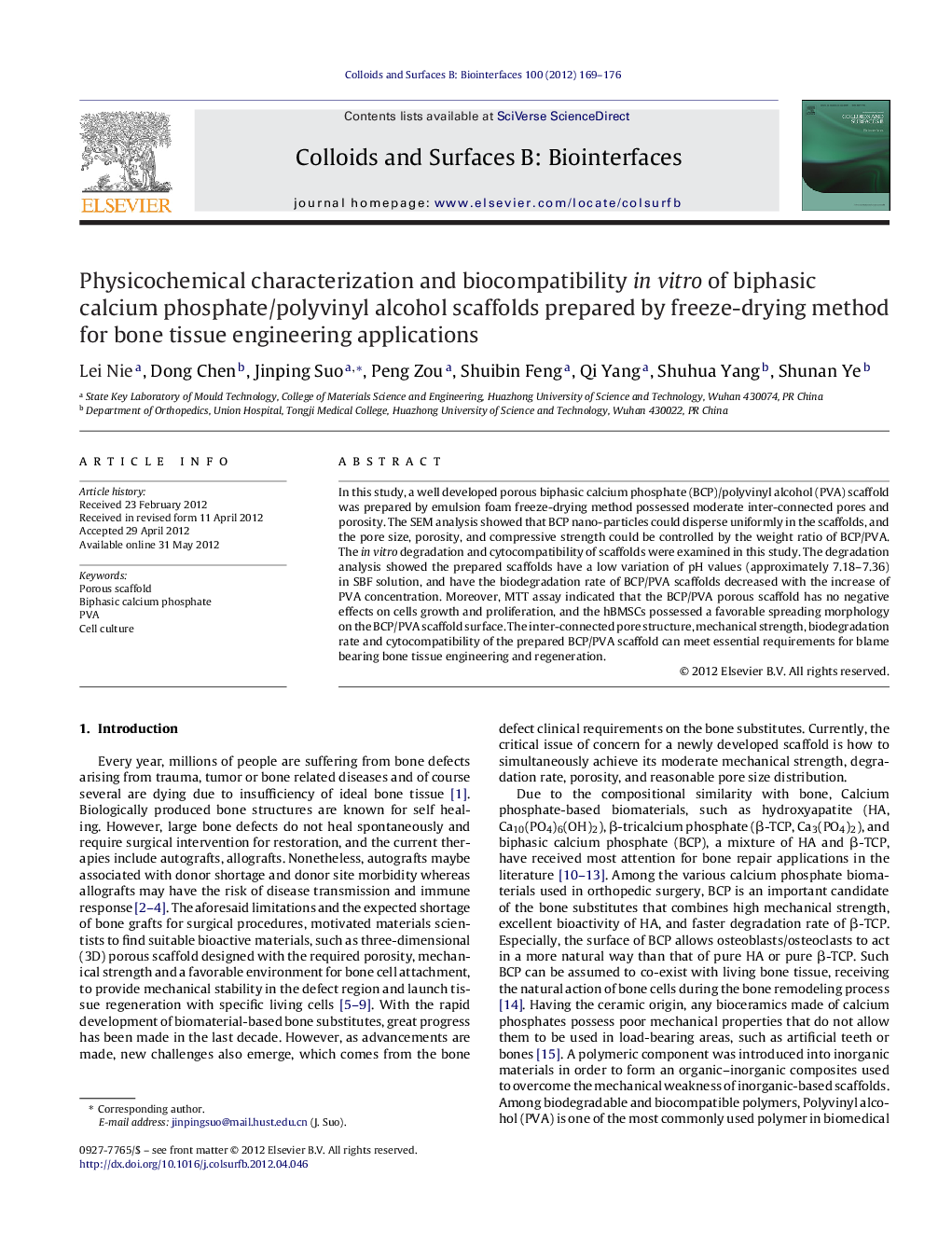| Article ID | Journal | Published Year | Pages | File Type |
|---|---|---|---|---|
| 600274 | Colloids and Surfaces B: Biointerfaces | 2012 | 8 Pages |
In this study, a well developed porous biphasic calcium phosphate (BCP)/polyvinyl alcohol (PVA) scaffold was prepared by emulsion foam freeze-drying method possessed moderate inter-connected pores and porosity. The SEM analysis showed that BCP nano-particles could disperse uniformly in the scaffolds, and the pore size, porosity, and compressive strength could be controlled by the weight ratio of BCP/PVA. The in vitro degradation and cytocompatibility of scaffolds were examined in this study. The degradation analysis showed the prepared scaffolds have a low variation of pH values (approximately 7.18–7.36) in SBF solution, and have the biodegradation rate of BCP/PVA scaffolds decreased with the increase of PVA concentration. Moreover, MTT assay indicated that the BCP/PVA porous scaffold has no negative effects on cells growth and proliferation, and the hBMSCs possessed a favorable spreading morphology on the BCP/PVA scaffold surface. The inter-connected pore structure, mechanical strength, biodegradation rate and cytocompatibility of the prepared BCP/PVA scaffold can meet essential requirements for blame bearing bone tissue engineering and regeneration.
Graphical abstractFigure optionsDownload full-size imageDownload as PowerPoint slideHighlights► Porous BCP/PVA scaffold was prepared by emulsion foam freeze-drying method. ► The pore diameters were controlled by the weight ratio of BCP/PVA. ► The scaffolds has the low variation of pH values in SBF solution. ► The hBMSCs possessed a favorable spreading morphology on the scaffold surface.
